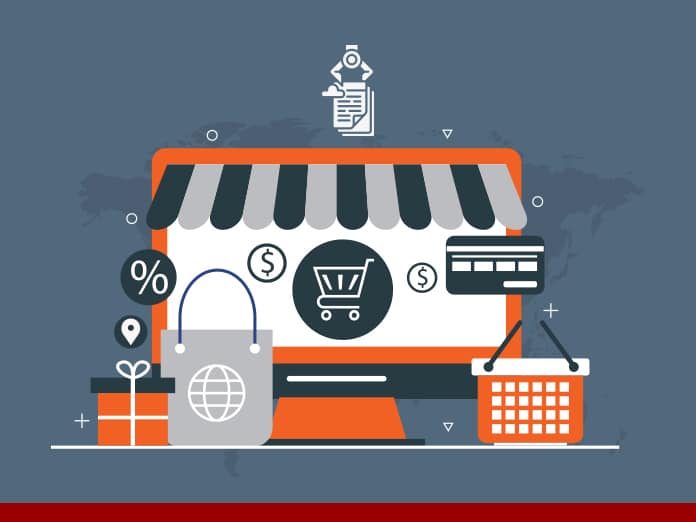To begin with, Amazon is known as the world’s largest Internet retailer in terms of total sales and market capitalization. This eCommerce platform includes vast data that are vital to online businesses. In this blog, we are going to discuss the top 10 reasons why people are scraping data from Amazon. Shoppers are increasingly becoming more confident in purchasing their laptops or smartphones online. Today, a lot of shoppers are beginning their online search on Amazon, avoiding search engines like Google or Yahoo altogether. The loyal base of paying Prime members is priceless for Amazon, as they are the key to the massive success of the retailer. However, to convert your typical online consumer to a customer, e-commerce dealers need to leverage data analytics to optimize their offerings.

Jump to Section
So Why Do You Need Amazon Scraping?
As a retailer, you can imagine how valuable information and data Amazon carries: products, reviews, ratings, exclusive deals, news, etc. Scraping data from Amazon is beneficial to both sellers and vendors. In brief, Amazon carries all the information you need, collected in just one place. Thus, Amazon data scraping can solve the time-consuming e-commerce data extraction process. Since one needs a solid understanding of how much information the web has and how many websites you need to scrape to find all the data you need.
Keep reading to find out more in detail about Amazon data scraping and what insights it can provide for your business.
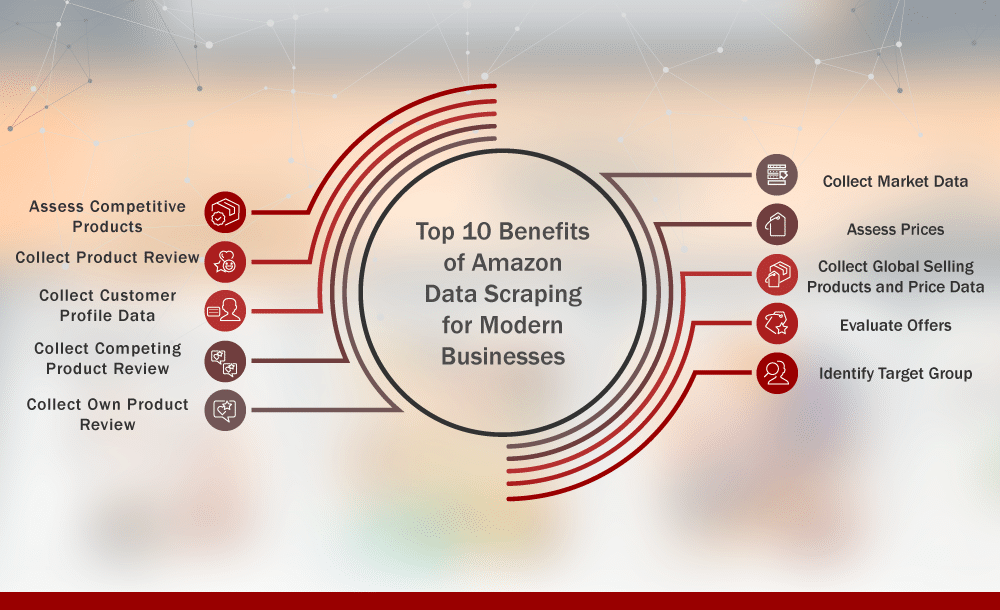
1. Assess Competitive Products
Competition analysis is one of the most critical aspects of business decision-making. Collecting data from competing products will help Amazon sellers build effective marketing strategies and make the right decisions. Since Amazon has all the latest information on the product lists, you can regularly scrap your competitors’ products from their Amazon store and compare and monitor all changes. Most likely, you’ll find all your competitors on Amazon. So scrape Amazon products to do a competitor product analysis.
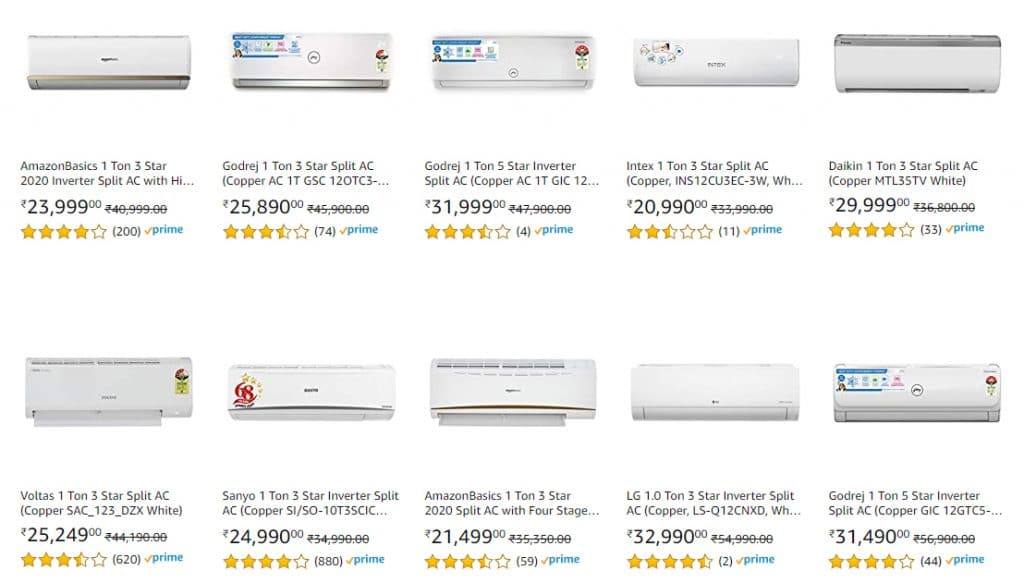
2. Collect Product Review
Businesses should always know how their products are performing on the market. For the Amazon dealer, the best way to make bludgeoning sales will be to ensure that their products are listed first in the relevant search. One way to see the performance of its products is to study product reviews and perform sentiment analysis. The reviews are positive, neutral, and negative. Scraping amazon data allows Amazon dealers to recognize factors that influence product ranking and, in turn, to establish successful strategies to boost rankings. With the product review data in hand, Amazon sellers would be able to strategize on how to improve their products, customer service, etc.
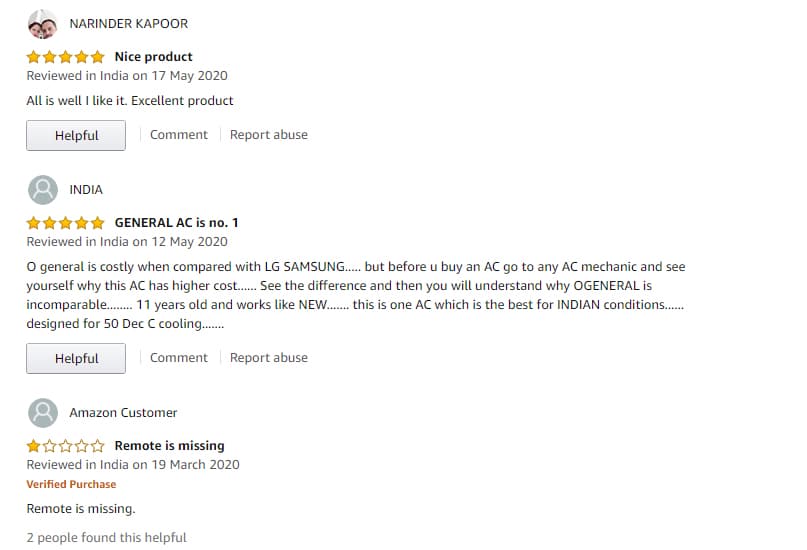
3. Collect Customer Profile Data
Every business has its target niche, so does the eCommerce business, and the scraping of customer profiles would have created a tremendous opportunity for lead generation. However, Amazon’s web scraping policy is stringent and protective when it comes to the personal information of its customers. Amazon sellers switch strategies to obtain databases of consumers who have purchased their products. 
4. Collect Competing Product Review
As we’ve already mentioned, you need to monitor competitors’ activity as carefully as you monitor yours. You will find a lot of insights once you look into your competitors’ review section on Amazon’s website. What people dislike most about their products? Once you learn that, you’ll find a significant aspect upon which to build your competitive advantage. If you find what people love the most about your competitors, you’ll also find in which area they are winning over you.

5. Collect Own Product Review
A business should always know how its products are doing on the market. Amazon is well known for its honest review section. One way to find out how your products perform is to study your products’ reviews. 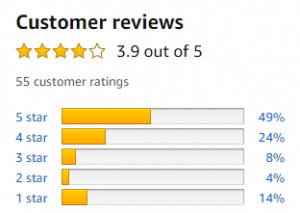
6. Collect Market Data
To determine your most profitable niche, sellers need to study market data. This will, in turn, highlight what kind of products are most in-demand, understand Amazon’s category structure, and how the products fit into the existing market. If you scrape best-selling and top-rated products regularly, you can also find products that are losing top-selling positions. Namely, scraping Amazon data from competing products that provide this information, which can then be used by the seller to refine their internal assortment and make the best use of their manufacturing resources.
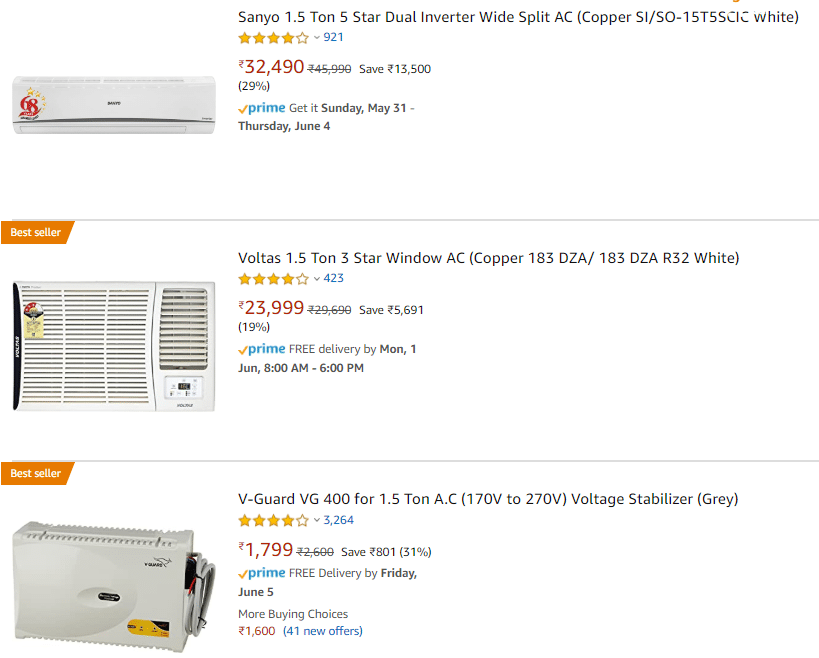
7. Assess Prices
Price scraping from Amazon has a lot of advantages. Competitor pricing analysis will help you spot price trends, help you analyze your competitors, and, most importantly, help you identify the best pricing strategy. A good pricing strategy will increase profits and make your company more competitive. In general, in the field of e-commerce data extraction, price scraping is a significant move that equips a business with strategic awareness to resolve competition.
8. Collect Global Selling Products and Price Data
Amazon operates globally and ships internationally. Thereby, you can identify opportunities for international sales by scraping product data that ship overseas. Compare the prices of these products in other markets and find the markets where prices are higher. Then, based on a comparative price data analysis, you should start extending to these markets.

9. Evaluate Offers
For a buyer, offers act as the most beautiful part of e-commerce sites. Knowing what your competitor has to offer will help you build a successful marketing plan for your products. 
10. Identify Target Group
Every seller specializes in a particular product category and has a certain kind of consumer database. Through knowing their target market, a seller can make intelligent choices about the products that it sells.
Scraping customer preferences on Amazon can inform the seller of their customer base. Although Amazon protects the profile of customers to a large degree, sellers may come up with a plan for collecting profiles of their customers. These customer data can then be used by Amazon sellers to study their shopping habits. It can also be used to plan different product combo sets accordingly, thereby boosting sales.
Conclusion
In summary, Amazon scraping has the potential to provide a wealth of information with untapped potential waiting to be leveraged in key decision-making. Want to learn more about how you, too, can turn your Amazon company with web scraping? Please contact Loginworks, your web data scraping experts.
- Business Intelligence Vs Data Analytics: What’s the Difference? - December 10, 2020
- Effective Ways Data Analytics Helps Improve Business Growth - July 28, 2020
- How the Automotive Industry is Benefitting From Web Scraping - July 23, 2020

